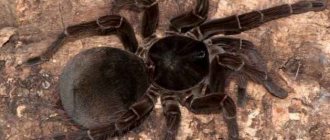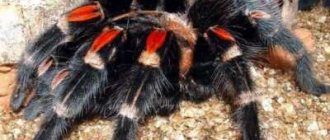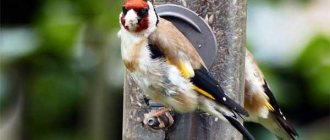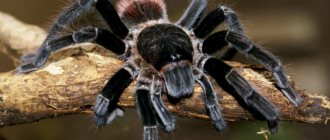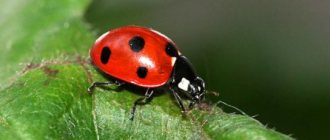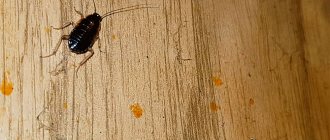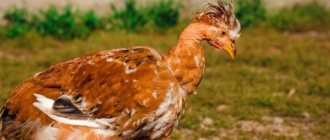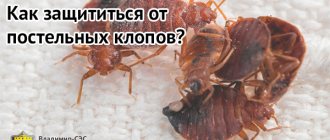Most often, people keep more or less familiar pets at home. In the first place, of course, are cats and dogs, in second are birds, in third are aquarium inhabitants (and not only fish, this also includes turtles, geckos, toads and frogs, although they are preferred, of course, less often than guppies and swordtails ). Spiders are probably at the bottom of the list of animals that people are willing to see next to them. Arachnophobia is a very common fear. However, if a person decides to equip a terrarium with arachnids at home, he usually likes the goliath tarantula most of all as an inhabitant of a glass house. The main argument is the size of the spider. The largest representative of these animals is clearly visible and represents a rather interesting object of observation.
How to choose a spider
In pet stores where it is sold, you can, of course, ask whether it was brought or received, so to speak, on the spot, but it is not a fact that the answer will be honest. Therefore, in any case, you will have to focus primarily on what the goliath tarantula spider you like looks like. The main sign of his health is mobility and activity. If the spider lies down all the time or tucks its limbs under itself, most likely it is sick, and seriously ill. The second version is that the specimen you looked at sheds. During this process, spiders can even fall onto their backs and straighten their legs. When the goliath tarantula molts, you should not take it - it then takes a long time to recover and is susceptible to disease. Add to this state of getting used to a new place - and you get a lot of problems.
A very telling sign is the condition of the abdomen. It should be round and elastic. Wrinkling indicates dehydration, which means you will again have to nurse your acquisition.
Sometimes the goliath tarantula can show off broken legs. This fact scares off inexperienced owners, but in fact it is not an obstacle to the purchase: after a couple of lines they will recover. The main thing is that there are no open wounds on the paws.
Two more caveats. If you are not going to breed spiders, buy females - they live much longer. And don’t take too big ones - it’s quite possible that they’re already old.
House tarantula spider
There are no safe or non-venomous tarantulas. This is the basic rule to remember. There are only those species in which the degree of toxicity of the poison is slightly less.
There are species that have earned the love and respect of people for their beautiful appearance and demeanor.
How to equip your home
Most spiders are natural loners, as evidenced by the comparison “like spiders in a jar” (they cannot coexist peacefully). So it is better to leave the aquarium at the complete disposal of one individual. The container where the goliath tarantula spider will be housed can be either plastic or glass, it is important that it be closed - either with a tight lid or with doors. Spiders are excellent climbers on glass, so if you don't want your pet to get out, take care of it. The bottom should be covered with a bed of gravel, moss, pine sawdust; vermiculite would be the best choice.
Terra Incognita | The largest spider in the world
The largest spider in the world
Giant spiders lived back in the era of dinosaurs and then their size was not something incredible. As for our time, you can still meet such spiders, although for many people meeting them will cause either panic or admiration.
Next we will talk about one of these spiders - the Goliath tarantula or Blond's theraphosis. It is he who is one of the largest spiders in the world, since the length of his body in the leg span can reach 28 centimeters!
This formidable predator is quite widespread in the tropical forests of some South American countries, namely northern Brazil, Guyana and Venezuela. It is most often found in damp, swampy areas.
The body of the spider consists of the cephalothorax and abdominal sections. The eyes and eight legs make up the cephalothorax of the spider. The abdominal organ includes the spinal organ, heart and genitals. The excretory system runs through the entire body of the spider. The abdominal part of the female has an egg chamber.
Despite the fact that the spider has poor eyesight, it is able to see in the dark. Like all tarantulas, the goliath is a carnivore. Sitting quietly in ambush, it lies in wait for its prey, then pounces on it using its fangs.
Although the spider is called a tarantula, it does not feed on birds. It’s just that the spider was seen for the first time when it was eating a bird. Vertebrates and invertebrates such as mice, lizards, small snakes, beetles, and butterflies are the main diet of the goliath.
Representatives of the goliath tarantula who are 3 years old are considered adults (mature). Sometimes after mating, the female eats her “favorite”. The goliath has sharp spines on the first pair of limbs, which serve as its protection from the female. The male lives on average about 6 years. The female can be up to 14 years old.
The female lays from 200 to 400 eggs, which she incubates for two months. After the little spiders are born, the mother spider looks after them for several weeks, after which they lead an independent lifestyle.
The goliath tarantula is distinguished by aggressive character traits. Sensing danger, it emits a peculiar hissing sound due to the friction of the bristles on its legs. Fangs, the length of which is a couple of centimeters, as well as burning villi serve as protection. The fangs are poisonous, but not very toxic compared to other poisonous insects.
The refuge for these spiders are deep burrows, which previously served as a home for small rodents until they met their current owner. The entrance to the burrow is protected by cobwebs, and all the walls from the inside are also shrouded in it. Females spend most of their lives here, coming out only at night to hunt and during mating. Leaving the house for a long time is not in their rules. Often spiders hunt nearby and drag the prey to their lair.
Besides size, there is another difference between male and female. The males have small hooks on their front legs, with which he holds the female’s huge chelicerae during mating, saving his life in this way. The color of these spiders is most often dark brown, and there are reddish-brown hairs on their legs. Because of these numerous hairs, which also cover the entire body, these spiders are also jokingly called “fluffy”.
But this is not a decoration at all, but one of the means of protection against uninvited guests. The fact is, when these hairs get on the skin, lungs or mucous membranes of the mouth and nose, they cause severe irritation. In order for the “weapon” to reach its target, the spiders brush hairs from their abdomen in the direction of the enemy with sharp movements of their hind legs. In addition, they serve as an organ of touch for the spider. The hairs pick up the slightest vibrations of the earth and air. But they see poorly.
For a long time it was believed that the venom of the goliath tarantula is very dangerous and most often leads to death, but it turned out that this is far from the case. The effect of a spider bite can be compared to a bee sting. A small swelling appears at the site, which is accompanied by quite tolerable pain. Although for allergy sufferers its bite can be dangerous.
Spider venom has a paralyzing effect on the nervous system of smaller prey, such as frogs, small snakes, insects, rodents, lizards and other small animals. The victim is unable to move after being bitten.
To feed, tarantulas inject digestive juice into the body of the “dinner,” which breaks down soft tissue and allows the spider to suck out the liquid and eat the soft meat of its prey.
The most interesting thing is that the tarantula does not feed on birds. Well, if only in very rare cases, when a chick that has fallen from the nest gets in his way. The spider got its name thanks to the German entomologist and artist Maria Sibylla Merian, who was the first to sketch it. They show a spider eating a small hummingbird. This is where the name “tarantula” stuck to it. The official description of this tarantula spider belongs to the entomologist Latreille (1804).
The following information may seem a little wild to you, but among local residents these spiders are a delicacy and they use not only adult specimens, but also spider eggs. As a result, the population of these animals in their natural habitat is gradually decreasing.
This individual behaves quite aggressively and does not like to be picked up. And although the goliath’s venom is not very toxic, quite a lot of it is released.
If you have a goliath tarantula , then the terrarium in which it lives will not look like a dish with soil, but like a place where a very serious animal lives. The terrarium for the spider should be spacious enough.
The terrarium can be either plastic or glass, horizontal type. The volumes should be on average 25-35 liters with a closing lid. The lid is needed to prevent your pet from suddenly deciding to take a walk outside the terrarium. Spiders should be kept separately due to their inherent cannibalism.
Sphagnum, pine sawdust, and vermiculite are used for bedding. The best solution would be to choose coconut substrate more than 5 cm as bedding. In order for the animal to have the opportunity to make a hole for itself, a coconut shell or a medium-sized piece of bark should be placed in the terrarium.
The temperature regime for normal maintenance should be within 22-26C, but they can easily tolerate a drop in temperature to 15C. The main thing is that the temperature of the engorged spider is not too low. In this case, there is a high probability of the onset of putrefactive processes of food in the spider’s stomach. Humidity should be high - 75-85%. If the humidity is insufficient, there may be a problem with the normal molting of the animal. To maintain humidity, install a water bowl and mist the terrarium regularly. Provide good ventilation, this will protect the spider from fungal infections.
The feeding process can take more than a day. The goliath spider feeds on small insects. Adults successfully cope with frogs and mice.
The feeding frequency of young spiders is twice a week, adults feed once a week, one and a half times. There is no need to feed young spiders with insects that are too large, i.e. such that would exceed the size of half the abdomen of a goliath. This can cause stress and, as a result, food refusal.
The maximum time that a goliath spider can go without food is about 6 months. But of course you shouldn’t experiment with your pet.
The most difficult period in the life of a spider is molting. At these moments you should not touch or irritate them. During molting, the Goliath tarantula and other spiders move little and do not eat anything. The regularity of shedding depends on the age of the animal. Young individuals shed regularly, but adults molt every two months or a year.
An interesting fact is that the web of tarantulas does not serve as a trap for the prey, like other representatives of this species; tarantulas are real hunters, they track and attack prey. Tarantulas wait for their prey in ambush and jump on it. This feature, as well as their coloring, has led local residents to call tarantulas “land tigers.”
Although the goliath tarantula is considered the largest spider in the world, there is still one species that surpasses it in the span of its limbs, but is significantly inferior in body size - Heteropoda maxima, whose leg span reaches 30 centimeters. The largest specimen was discovered in 2001 in Laos, in one of the caves in Khammouane province.
sources
https://www.8lap.ru
https://exomania.com.ua
https://ianimal.ru
https://quickfly.ru
Site materials used: https://masterok.livejournal.com/789435.html
Correct temperature and humidity
If you choose a goliath tarantula as a pet, keeping it requires, first of all, maintaining the correct living conditions. The temperature should fluctuate between 23-28 degrees. Spiders can withstand a reduction of up to 15 o, but it is better not to leave them in such extreme conditions for a long time. Especially if the goliath tarantula is full: low temperatures cause rotting in the stomach.
Humidity is equally important. If it is insufficient, the blond tarantula (or goliath tarantula) cannot molt, and if it becomes too dry, it dies altogether. The aquarium must be equipped with a bath of water or a reservoir with moistened moss. If temporarily neither one nor the other is available, at least spray the litter every day.
Too high humidity, in turn, stimulates the development of mold, which affects the body and respiratory organs of spiders. So it is better to maintain a constant humidity of 75 percent.
Food and hunting
Goliath spiders practice secretive hunting. He sits inside his hole and, thanks to his hairs, detects any movements around him.
At the right moment, he suddenly jumps out of the hole and attacks his prey. Like all spiders, he injects his poison into it, which kills the victim and dissolves its insides, and then sucks them out of it.
On this topic, you may be interested in: How do spiders differ from insects?
The spider's diet consists of various insects, other arthropods, worms and small vertebrates.
It can easily catch and eat amphibians, rodents, lizards and some snakes. Sometimes it can catch a bird, but this happens quite rarely.
What, how and when to feed
The name "goliath tarantula" is misleading. The main food of these spiders is still large insects. When they reach a certain size, they are fed with naked mice and given small pieces of lean meat. Insects used for food should be no more than a third of the size of the spider, otherwise there may be problems with digestion. Since it lasts a long time (a day or even more), spiders are fed twice a week (grasshoppers, large cockroaches, crickets, mealworms) while they are young and molt frequently. Adults feed once a week (sometimes less often). More often they are fed only before breeding.
Uneaten food must be removed from the terrarium - if the spider is full, it may be frightened by the energetic movements of large insects, and in a molting goliath they may damage the soft shell.
If the spider does not eat, it means that it will either molt soon, or is full, or the aquarium is too cool.
Appearance
The Goliath tarantula is an impressively sized spider. The body size reaches 12 cm, the leg span reaches up to 30 cm. Female spiders are larger than males. Males have a total size of up to 20 cm. Spiders have significant weight, some specimens reach a weight of 175 grams.
Body color varies from light brown to dark brown, and from reddish to black.
There may be darker or lighter lines on the legs that differ from the body color. Theraphosa blondi has eight small eyes at the front of its head and eight legs. Near the mouth there are two chelicerae and two pedipalps.
The chelicerae have venomous fangs, and the pedipalps are used to explore the environment and mate.
The spider's fangs range in size from 1.9 to 3.8 cm, they are hollow and connected to the spider's venom glands.
The entire body, including the legs, like most spiders, is covered with hairs. They are used as antennas to receive any vibrations and study the surrounding world, as well as as a means of protection.
Distribution map of Theraphosa blondi
Attention - shedding!
Spiders cannot do without it. At a young age, the exoskeleton changes frequently; adults molt about once a year. During the molting process, spiders hardly move or eat. A day before the change of “skin” they generally freeze, lying on their back. No need to worry and check if your pet is alive, just wait. When the old “clothes” come off, there will be new, soft ones underneath; At the same time, the spider becomes completely defenseless. Normal humidity at such a moment is vitally important; if the air is too dry, the animal dies. It will not be eaten until the cover hardens, which lasts several days.
Keeping large spiders, as we see, is a troublesome task. However, they are interesting to watch. And few of your friends can boast of such pets. And if you overcome your prejudice, you will see how beautiful the Goliath tarantula is (photo above).
Goliath Spider Venom
Despite the fact that the spider has large fangs that easily bite through human skin, its venom is not dangerous to humans if there are no allergic reactions. The effect of the poison on humans is similar to that of a bee or wasp. A spider can bite a person only in self-defense, and in most cases the bite will be dry, without poison.
Spider hairs have an irritating effect; if they come into contact with the skin, they cause an itching effect; if they get into the respiratory system or mucous membrane, they can cause an allergic and irritating reaction.
If a spider releases venom during a bite, the following symptoms may appear: nausea, pain, redness and swelling may appear at the site of the bite.
All symptoms disappear within a few days. No fatalities from a spider bite of this species have been recorded.
Goliath spider eats a mouse
